SOC 2 Checklist for SaaS Startups: Complete Guide [2025]
Complete SOC 2 checklist for SaaS startups covers 8 essential areas from risk assessment to disaster recovery. Unlock enterprise deals faster in 2025.
- Home
- Compliance HubHub
- SOC 2 Checklist for SaaS Startups: Complete Guide [2025]
If you're running a SaaS startup in 2025, SOC 2 compliance isn't optional anymore. It's the price of admission for closing enterprise deals.
The numbers tell the story: recent industry data shows SOC 2 adoption surged 40% in 2024 as companies rushed to meet client demands. Over 60% of businesses say they're more likely to partner with a startup that has SOC 2, and about 70% of VCs prefer investing in SOC 2-compliant startups. On the flip side, over a third of organizations have lost deals due to lacking a required security certification like SOC 2. Simply put, if you can't prove your security posture, you're leaving money on the table.
The challenge? Traditionally, preparing for a SOC 2 audit means spending 3-6+ months (plus significant resources) getting everything ready. For a fast-moving startup, that timeline can kill momentum and cost crucial deals. But here's what you need to know: today's tools and best practices can dramatically compress this process. Some startups using modern automation platforms like Comp AI are achieving audit readiness in weeks (or even days) instead of months.
This guide breaks down the SOC 2 compliance checklist into eight essential areas. By following these steps, you'll build a solid security foundation, pass your audit faster, and unlock those enterprise contracts with confidence.
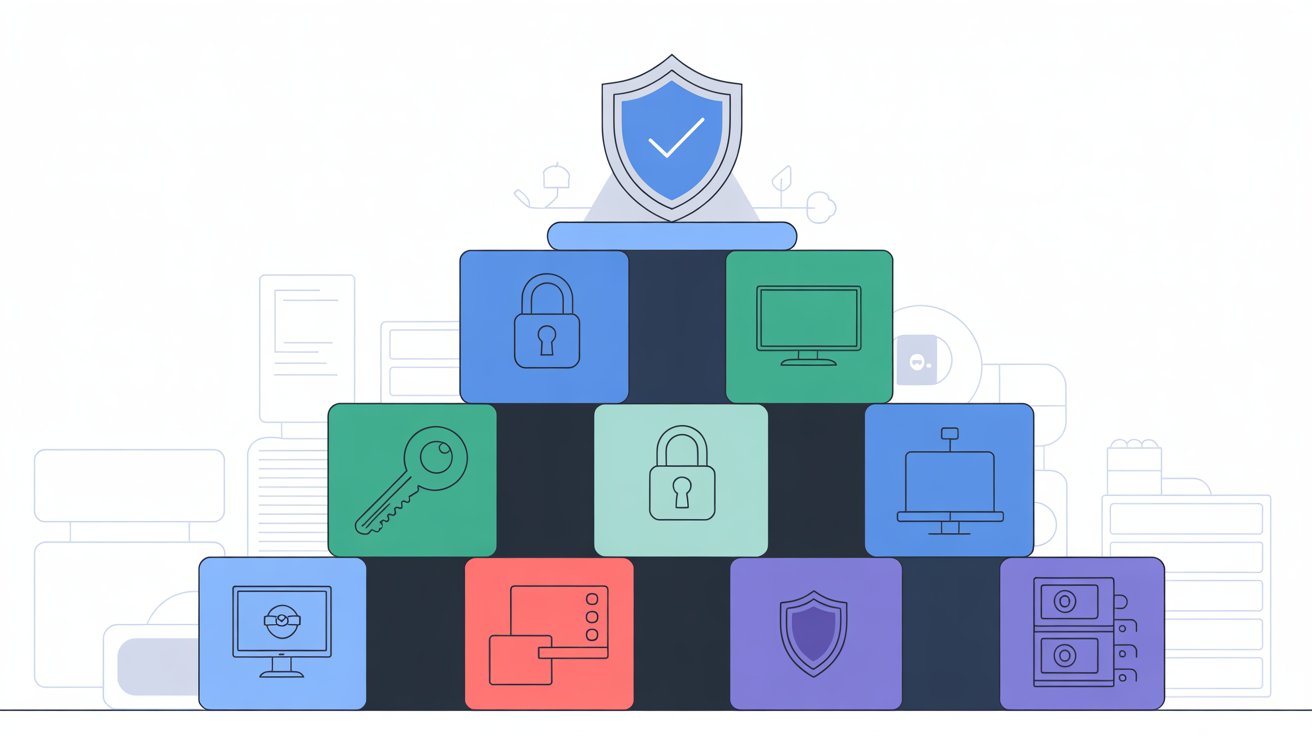
First, a quick primer. SOC 2 (Service Organization Control 2) is an independent audit framework that evaluates your organization's controls for security, availability, processing integrity, confidentiality, and privacy. Every SOC 2 report must cover the Security category (the common criteria), and you can choose to include other categories based on your business. For example, a cloud SaaS handling sensitive customer data might include Confidentiality, whereas a SaaS offering uptime SLAs may include Availability or Processing Integrity.
Also note there are two types of SOC 2 reports:
Type | Verification Scope | Timeline | Use Case |
|---|---|---|---|
Type I | Controls designed and in place | Point-in-time | Quick compliance proof |
Type II | Controls operating effectively | 3-12 months observation | Full operational proof |
Many startups opt for a Type I report first (a quicker win) and then pursue Type II after operating the controls for a few months. The audit for Type I typically takes less time, which helps startups prove compliance faster.
With that context, let's get into your compliance journey.
How to Establish a Risk Assessment and Management Program for SOC 2
The first checklist item is to formalize your risk assessment and management program. This is the cornerstone of SOC 2 compliance: auditors want to see that you systematically identify and address risks to your customers' data and operations. In practice, this means performing a thorough risk assessment. List out potential threats and vulnerabilities (from data breaches to infrastructure outages), evaluate their likelihood and impact, and decide how to mitigate each one. The output is often a risk register and a set of controls or policies mapped to those risks. Having a proactive risk management program not only satisfies the SOC 2 requirement for risk assessment but also guides your entire compliance effort by focusing on what matters most.
Checklist: Build your Risk Management Program
- Document a Risk Policy: Define how you assess and handle risks (methodology, scoring, risk tolerance). Create a risk management policy or charter approved by leadership.
- Identify Threats and Vulnerabilities: Conduct workshops with teams (engineering, IT, HR, etc.) to brainstorm risks. Consider technical risks (e.g., data center outage, malware attack) as well as process risks (e.g., insider threat, lack of employee training).
- Maintain a Risk Register: For each identified risk, record its description, an owner, impact and likelihood ratings, and the mitigation or control in place. Update this register regularly.
- Prioritize and Mitigate: Rank risks by severity and address top ones with new controls or process changes. For example, if "Stolen credentials" is a high risk (a common cause in breaches), mitigation might be enforcing multi-factor authentication (which we'll cover next).
- Review Periodically: Set a schedule (e.g., quarterly or at least annually) to re-assess risks and track progress on mitigation. Business and threat landscapes change fast. Your risk program must keep up.
Having a living risk management program demonstrates a mature security posture to auditors. It shows you're not just ticking boxes but actively reviewing and improving your defenses. It also directly supports multiple Trust Service Criteria (especially Security and Availability) by addressing issues before they lead to incidents. Plus, by regularly reviewing and updating the assessment, you show an ongoing commitment to protecting customer data.
This foundation guides everything that follows.
Best Access Controls and Identity Management for SOC 2 Compliance
Controlling who can access your systems and data is arguably the most critical technical area in SOC 2. Poor access security is a leading cause of breaches.
⚠️ CRITICAL SECURITY INSIGHT: *62% of breaches involve stolen or weak credentials, brute-force, or phishing attacks.* Multi-factor authentication (MFA) is your strongest defense against this primary attack vector.
For a SaaS startup, access control usually centers on your cloud infrastructure, code repositories, SaaS tools, and employee devices. SOC 2 auditors will expect to see that you enforce the principle of least privilege (each user gets the minimum access necessary), have robust authentication (like MFA), and a process to manage user accounts throughout their lifecycle.
Checklist: Lock Down Access and Identity
- Centralize Identity Management: Use a single sign-on (SSO) Identity Provider (e.g., Okta, Azure AD, Google Workspace) to manage employee logins. This makes it easier to enforce security policies (password standards, MFA) uniformly. It also simplifies offboarding: disabling one account cuts access to all linked apps.
- Enforce Multi-Factor Authentication: Require MFA for all access to critical systems (cloud consoles, VPNs, admin panels, etc.). This is a must-have authentication control to prevent account takeovers. Ideally, your SSO or auth system should enforce MFA by default for all users.
- Role-Based Access Control (RBAC): Define roles and permission sets based on job functions (e.g., "Customer Support Rep", "DevOps Engineer"). Grant access by role rather than ad hoc. For example, developers might get access to source code but not customer data, whereas support reps might get read-only access to the production database for troubleshooting (but not the ability to alter data). Least privilege means no one should have permissions beyond what they truly need.
- Joiner-Mover-Leaver Process: Establish a clear process for onboarding new hires (provisioning accounts with the right roles), updating access when people change roles or teams, and immediately revoking access when someone leaves the company. Dormant or orphaned accounts are a big risk. Use an HRIS integration or automation scripts to deactivate accounts upon termination.
- Regular Access Reviews: Conduct routine reviews (e.g., quarterly) of user access rights. Have managers or system owners certify that each team member still requires their current level of access. Any unnecessary access should be removed promptly. Auditors often ask for evidence of these periodic access reviews as proof that access control is maintained over time.
- Secure Credentials and Keys: Ensure strong password policies (long, unique passwords stored in a password manager) and protect any API keys or secret tokens. If your product has its own user accounts, follow best practices (hash passwords, offer MFA to customers, etc.).
By tightening identity and access management, you dramatically reduce your risk of unauthorized data access. This fulfills core Security and Confidentiality requirements of SOC 2. It also addresses the user access lifecycle from onboarding to offboarding, ensuring appropriate access for each individual's role. This area tends to be one of the first things auditors look at, so a solid showing here creates a great first impression in your audit.

Get access control right, and you've won half the battle.
How to Enable Continuous System Monitoring and Logging for Compliance
No security program is complete without visibility into your systems. This means implementing logging and monitoring to track events like logins, data access, configuration changes, and potential security incidents. Under SOC 2, you'll need to demonstrate that you can detect and respond to anomalies (which is only possible if you're collecting logs and actively monitoring them). Effective monitoring addresses parts of the Security and Availability criteria by helping you catch issues (like intrusions or outages) quickly, before they escalate.
Checklist: Monitor and Log Everything Important
- Centralize Your Logs: Configure your infrastructure and applications to send logs to a central logging system or Security Information and Event Management (SIEM) tool. For a SaaS product, typical log sources include cloud platform logs (AWS CloudTrail, Azure, GCP audit logs), application logs, authentication logs, and network firewall logs. Centralizing them allows for correlation and easier analysis.
- Track Security Events: At minimum, log security-relevant events such as authentication attempts (success and failure), permission changes, administrative actions, and data exports or downloads. These logs will be crucial if you ever need to investigate an incident. Auditors may sample log records to ensure, for example, that you can trace which user deleted a resource or who accessed a sensitive file.
- Implement Real-Time Alerting: Use monitoring tools or cloud services (like AWS CloudWatch alerts, Azure Monitor, etc.) to set up alerts for suspicious or critical events. For instance, generate an alert for multiple failed login attempts (possible brute force), or if a deactivated account is used, or if server CPU spikes abnormally (could indicate a DoS attack or runaway process). Define what constitutes an incident that requires human review.
- Retain Logs as Evidence: Configure log retention to meet SOC 2 needs (often logs should be kept for at least 6-12 months) so that you can demonstrate to auditors what was happening during the audit period. Ensure only authorized team members can access and tamper with logs (logs themselves should be protected as they contain sensitive info).
The global average time to identify a data breach was around 194 days in 2024. Without continuous monitoring, attackers can lurk undetected for months, exfiltrating data and escalating privileges.
Robust monitoring is vital because, unfortunately, breaches can go undetected for a long time. Attackers can lurk for months if you aren't watching. By logging and watching your systems, you'll drastically cut detection and response times. Companies without strong monitoring take over 200 days on average to spot a breach, giving attackers a huge head start. Continuous monitoring helps ensure that if something goes wrong, you'll catch it and can react before major damage is done (a key part of maintaining trust and uptime).
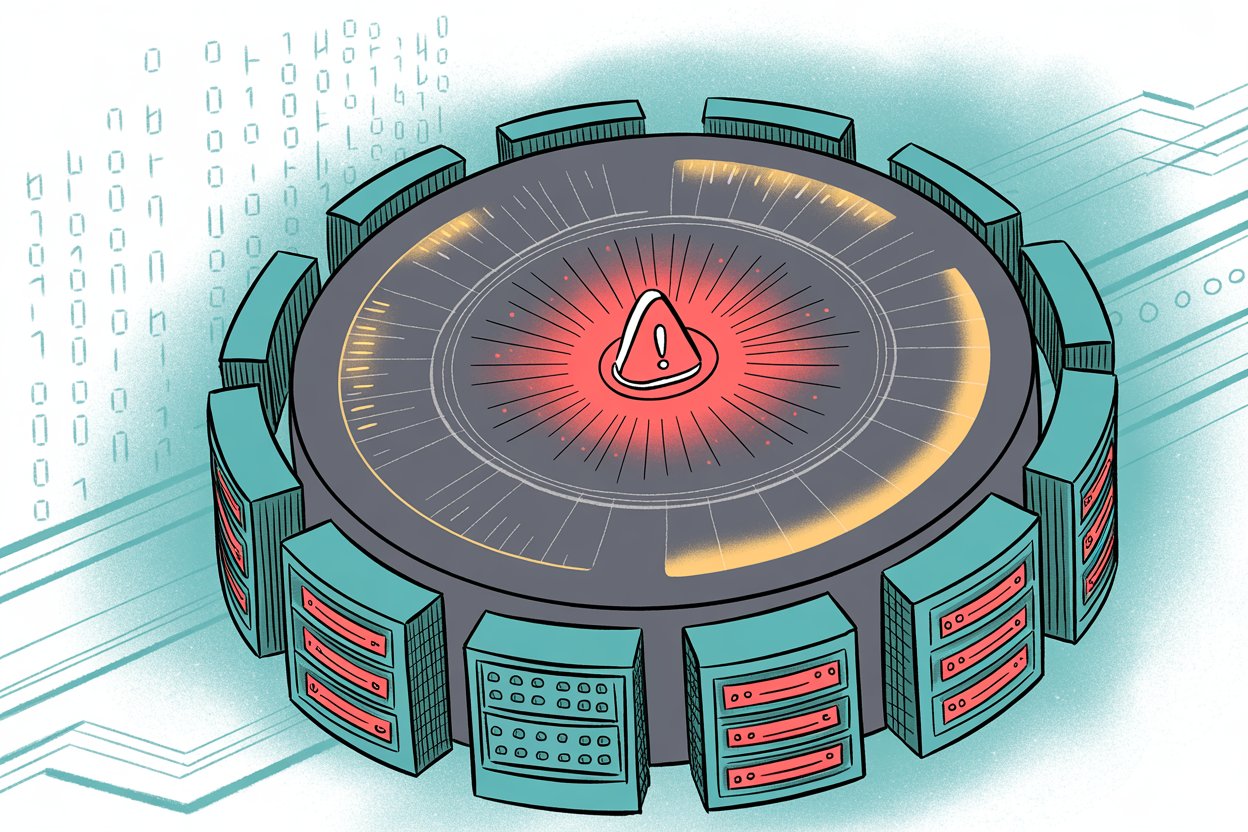
Data Encryption Requirements: At Rest and In Transit for SOC 2
Data encryption is a non-negotiable part of modern security and a prominent item on any SOC 2 checklist. The idea is simple: even if someone were to access your data without authorization, encryption keeps it unintelligible and unusable. SOC 2 auditors will expect to see that you encrypt sensitive data at rest (when stored in databases, file systems, backups) and in transit (when moving across the network). For SaaS companies that rely heavily on cloud services, this typically means making full use of cloud encryption features and industry-standard protocols.
Checklist: Lock Data Down with Encryption
- Encrypt Data at Rest: Enable encryption for all storage containing customer data. This includes databases (enable transparent disk encryption or use managed DB services where the cloud provider handles it), file storage or S3 buckets (turn on server-side encryption), and backups. Modern cloud platforms make this as easy as a checkbox. Ensure it's checked everywhere. Auditors may ask for proof (config settings or policy screenshots) that, for example, your production database is encrypted at rest.
- Encrypt Data in Transit: Use HTTPS/TLS for all web traffic and APIs so that data moving between your service and users is encrypted in transit. For internal services, use secure protocols for any service-to-service communication. Disallow legacy protocols like plain HTTP or outdated SSL versions. You might need to show an auditor your TLS configuration or attest that you enforce strong encryption ciphers.
- Manage Encryption Keys Securely: If you control your encryption keys, restrict access to them and consider using hardware security modules (HSMs) or cloud key management services (KMS) to manage keys. In many cases, using the cloud provider's managed encryption (KMS) is simplest: keys are rotated and stored securely for you. The goal is to prevent any single employee or intruder from easily obtaining the keys that could decrypt your data.
- Encrypt Credentials and Secrets: Beyond customer data, also protect sensitive config like passwords, API keys, and secrets. Use vault services or environment variable managers so that secrets aren't stored in plaintext in code or configuration. This might go beyond what SOC 2 explicitly checks, but it's a best practice that supports overall security.
- Data Masking and Tokenization (if applicable): If your SaaS handles highly sensitive personal data (credit card numbers, health data, etc.), consider masking or tokenizing that data in your system. This means replacing real data with dummy values or tokens in non-production environments and restricting who can see full values. While not strictly required for SOC 2, it demonstrates an extra level of diligence for Confidentiality.
Encryption directly addresses the Confidentiality principle of SOC 2: it's how you safeguard information from unauthorized access. It's also increasingly expected by customers and regulations. Remember that today over 80% of data breaches involve cloud-stored data (since that's where most data lives now), so encrypting that cloud data is critical.
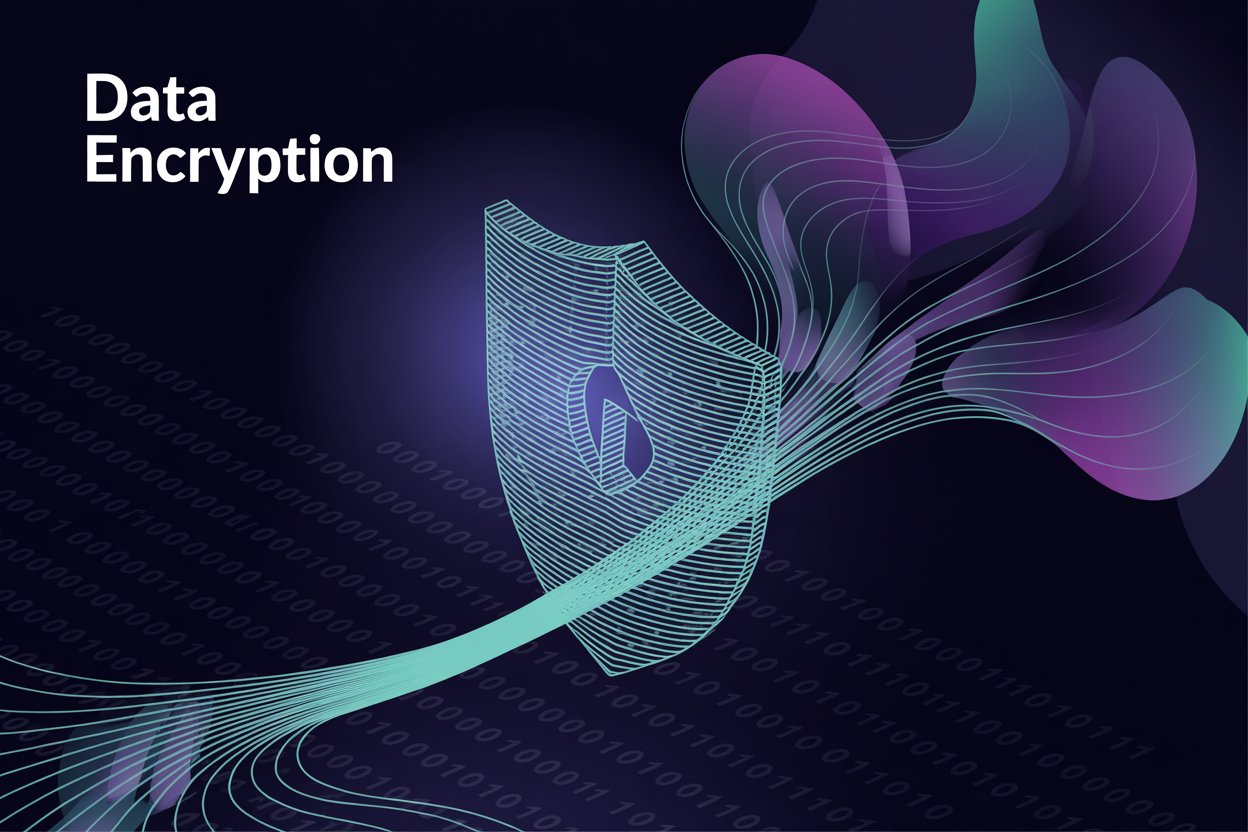
If done right, encryption is mostly invisible to your users but provides a strong security backstop.
How to Create a Formal Incident Response Plan for SOC 2
Even with great preventative controls, incidents can still happen. How you prepare for and handle security incidents is a major focus for SOC 2. Startups need to have an Incident Response Plan (IRP): a documented procedure detailing what steps to take if a security breach or system outage occurs. The plan should outline roles and responsibilities (Who declares an incident? Who communicates with customers? Who fixes the issue?), as well as the steps for investigation and recovery. SOC 2 auditors may not quiz every detail of your plan, but they'll want evidence that you have one and that your team is familiar with it. This falls under the Security and Availability trust criteria, ensuring you can respond to threats and maintain operations.
Checklist: Be Ready to Respond to Incidents
- Draft an Incident Response Policy: Write a policy or playbook that defines what constitutes a security incident and how such incidents are managed. Include severity levels (e.g., P1 for critical data breach, P3 for minor system outage) and the required response for each. The policy should designate an incident response lead or team (even if that's just "the CTO and one engineer" for a small startup).
- Include Key Steps in the Plan: At minimum, your incident response plan should cover the complete incident lifecycle:
→ Detection – Identify and report incidents through monitoring
→ Containment – Isolate affected systems, limit damage
→ Eradication – Remove the threat, patch vulnerabilities
→ Recovery – Restore systems and data to normal operations
→ Post-Incident Analysis – Root cause analysis, lessons learned
- Set Communication Guidelines: Clarify who needs to be notified and how. Internal escalation paths (engineers, management, legal) as well as external communication (notifying affected customers, regulators if needed, etc.) should be mapped out. For instance, if customer data is compromised, your plan might instruct that customers must be alerted within X hours and include a draft communication template.
- Run Incident Drills: Practice your incident response plan at least annually. This could be a tabletop exercise (walk through a hypothetical breach scenario with the team) or a full simulated drill. Keep a record of these exercises: it's great evidence to show auditors that your team is trained and the plan is tested. Plus, drills often reveal gaps to fix before a real incident strikes.
- Document and Learn: For any real incidents that occur, document the timeline and response actions taken. Do a "post-mortem" meeting to learn what went wrong and how to improve. Auditors appreciate seeing that incidents (if any) led to concrete improvements (new controls, updated policies, additional training, etc.). It demonstrates a commitment to continuous improvement in security.
*Nearly 60% of small businesses shut down within six months of a serious cyber attack.* Incident preparedness isn't just compliance but also existential insurance for your startup.
No one likes to imagine worst-case scenarios, but being prepared can make the difference between a minor hiccup and a startup-ending catastrophe. A solid incident response capability improves your odds of weathering the storm. It also reassures clients that even if something goes wrong, you have a proven process to handle it swiftly and transparently.
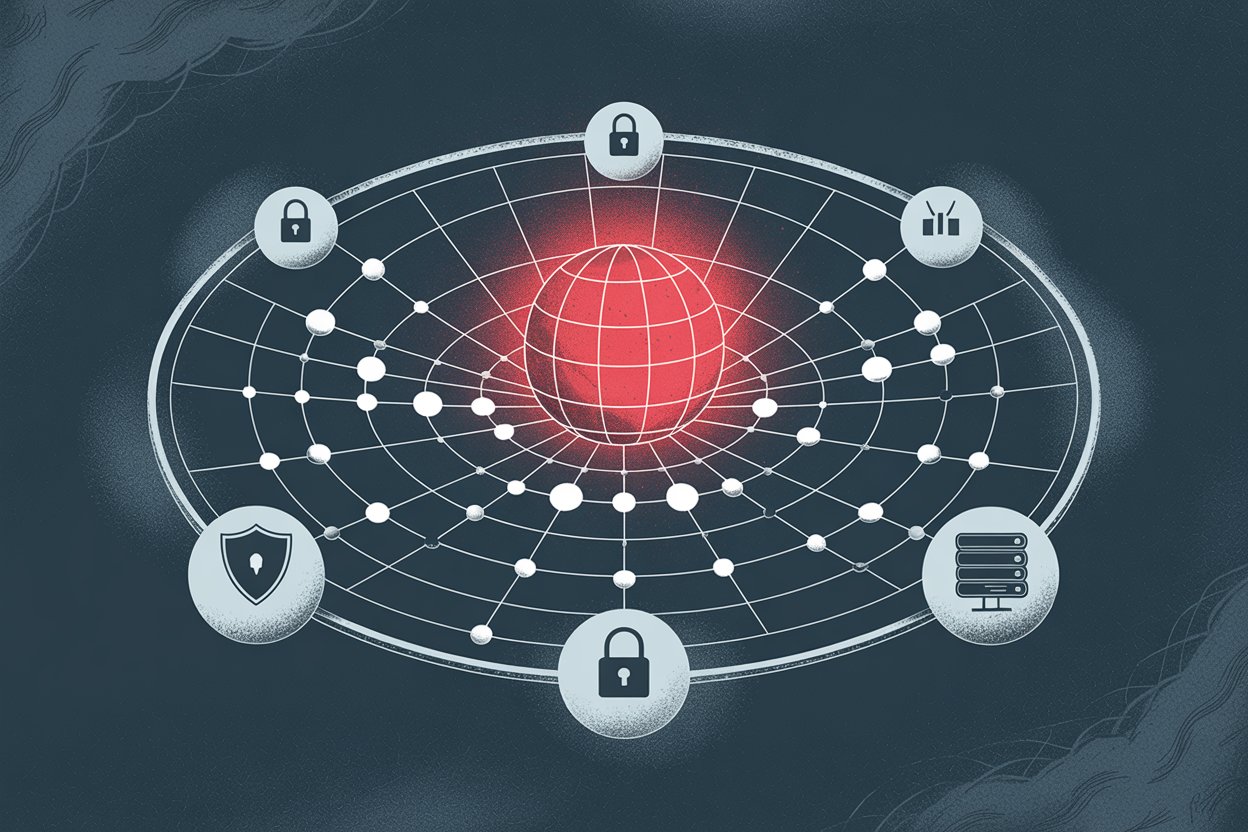
Vendor Management and Third-Party Risk Assessment for SOC 2
SaaS startups typically rely on dozens of third-party services: cloud platforms, SaaS tools, libraries, contractors, etc. Each of these vendors can introduce security risks. SOC 2 includes evaluating how you manage third-party risk as part of the broader security control environment. Simply put, you should have a vendor management process to vet the security of critical suppliers and ensure they meet your standards.
*84% of companies use SaaS applications that experienced a breach in the past year.* Your security is only as strong as your weakest vendor.
"Your security is only as strong as your weakest link" may be a cliché, but it's very relevant here. A breach in a sub-processor or a lax software dependency can harm you and your customers. Auditors will expect to see you track your vendors and require appropriate safeguards from them.
Checklist: Manage Third-Party Risks
- Maintain an Inventory of Vendors: Create a list of all third-party services and tools your startup uses, especially those that process or store customer data. Typical examples: your cloud hosting provider, payment processor, email service, CRM, error monitoring service, etc. This inventory should note what data each holds and its importance. It's the starting point to know where potential external risks lie.
- Assess Vendors' Security Posture: For each critical vendor, gather information on their security. Do they have a SOC 2 report or ISO 27001 certification? If yes, review it (or at least the summary) to ensure there are no red flags. If not, you might send them a security questionnaire or check their reputation and history (have they had breaches before?). The depth of assessment can be proportional to the risk: e.g., your cloud provider (high risk) warrants more scrutiny than a harmless analytics tool.
- Require Security Commitments: When feasible, sign Data Protection Agreements or include security clauses in contracts with vendors. For instance, if you use a sub-processor to store data, your contract might require them to notify you of any breach and maintain certain security controls. If you handle EU data, GDPR requires formal Data Processing Agreements with vendors. Auditors will be pleased to see you've contractually addressed third-party obligations where applicable.
- Monitor Vendor Compliance: Treat vendors somewhat like an extension of your own environment. Stay aware of their compliance status: e.g., note when a vendor's SOC 2 report is up for renewal and ensure you get the new one. Also keep an ear out for any news (many companies publicize if a vendor they use had an incident). Some startups set up Google alerts or use vendor monitoring services to get notified of breaches or security news about key suppliers.
- Establish an Access Control for Vendors: Ensure that third-party tools integrated with your systems only have the minimum necessary access. For example, if you use a third-party developer, give them a separate limited account; if you use an API integration, use scoped API keys with limited permissions. This way if a vendor is compromised, the blast radius is contained.
- Vendor Offboarding: If you discontinue use of a service, have a process to terminate its access and ideally delete or retrieve your data from it. This often gets overlooked: make it part of your offboarding checklist to revoke any tokens or credentials related to a vendor you no longer use.
Managing vendor risk satisfies aspects of the Security and Confidentiality criteria by extending your protective measures outward. It's increasingly important because supply chain attacks are on the rise. Showing auditors that you diligently vet and monitor your partners will instill confidence that you're not leaving a backdoor open through a supplier. Implement a comprehensive third-party vendor risk policy to formalize your approach.

Change Management and Configuration Controls Best Practices
Startups are constantly changing: deploying new code, adding features, tweaking infrastructure. Change management is about ensuring those changes happen in a controlled, documented way that doesn't inadvertently introduce security or reliability issues. For SOC 2, you should demonstrate that you have a process for managing changes to your systems and software configurations. This typically includes having a formal review or approval for significant changes, tracking what was changed when by whom, and maintaining secure configurations (hardening) for your systems. The Processing Integrity criteria (ensuring systems operate as intended) as well as Security are addressed by good change management practices.
Checklist: Control Your Changes and Configurations
- Version Control and Code Review: Manage all application code in a version control system (like GitHub or GitLab) and require code reviews or approvals on pull requests before merging changes. Auditors love to see that no code goes to production without at least one other person looking at it: it reduces chances of sloppy bugs or malicious code. You might show a screenshot of your repository settings requiring pull request reviewers, for example.
- Change Approval Process: Define what types of changes require formal approval and by whom. For instance, a major infrastructure change or a deployment to production might need sign-off from the CTO or DevOps lead. This can be lightweight in a startup (even an email or Jira ticket approval), as long as it's documented. The key is that changes aren't wild and ad hoc: there's awareness and sign-off. Maintain a log of changes promoted to production (many teams use an ITIL-like change log or just rely on Git history plus deployment logs).
- Separation of Environments: Use separate environments for development, testing, and production. Prevent changes from going straight to prod without testing. Also restrict who can deploy to production: perhaps only senior engineers or an automated CI/CD pipeline with approvals. This ties into access control as well (limit production access).
- Secure Baseline Configurations: Establish baseline secure configurations for servers, containers, and software. This means hardening systems: e.g., disabling unused ports, ensuring up-to-date patches, using secure config files. Document these baselines (even if it's a short checklist for setting up a new server). Tools like AWS Config or CIS Benchmarks can help enforce this. Auditors may ask how you ensure systems remain securely configured; you can point to using standard images or automated configuration management (like Terraform or Ansible scripts) that embed secure settings.
- Track Configuration Changes: If possible, use automation to track and alert on configuration changes in critical systems. For example, enable AWS Config or Azure Security Center rules that notify you if someone changes an S3 bucket policy or security group. Unplanned configuration changes can introduce vulnerabilities, so detection is key. It also provides evidence of compliance: you can show you'd catch if someone, say, turned off encryption on a database or opened a firewall port by mistake.
- Emergency Changes and Documentation: Even in fast-paced development, have a method to handle urgent hotfixes or changes (but make sure they're documented after the fact). If you bypass normal process to patch a critical bug at 2 AM, write a quick incident or change report the next day. This demonstrates maturity: you handle exceptions responsibly rather than chaotically.
You reduce the chance that a well-intentioned update breaks your security or availability by instituting these controls. Many security incidents stem from misconfigurations or unreviewed changes. A disciplined change management approach has real benefits: one study of breaches found that a huge number of cloud security failures come from misconfigurations, not cloud provider faults. Auditors will check that you "say what you do, and do what you say" when it comes to changes: you have policies for making changes, and you follow them.
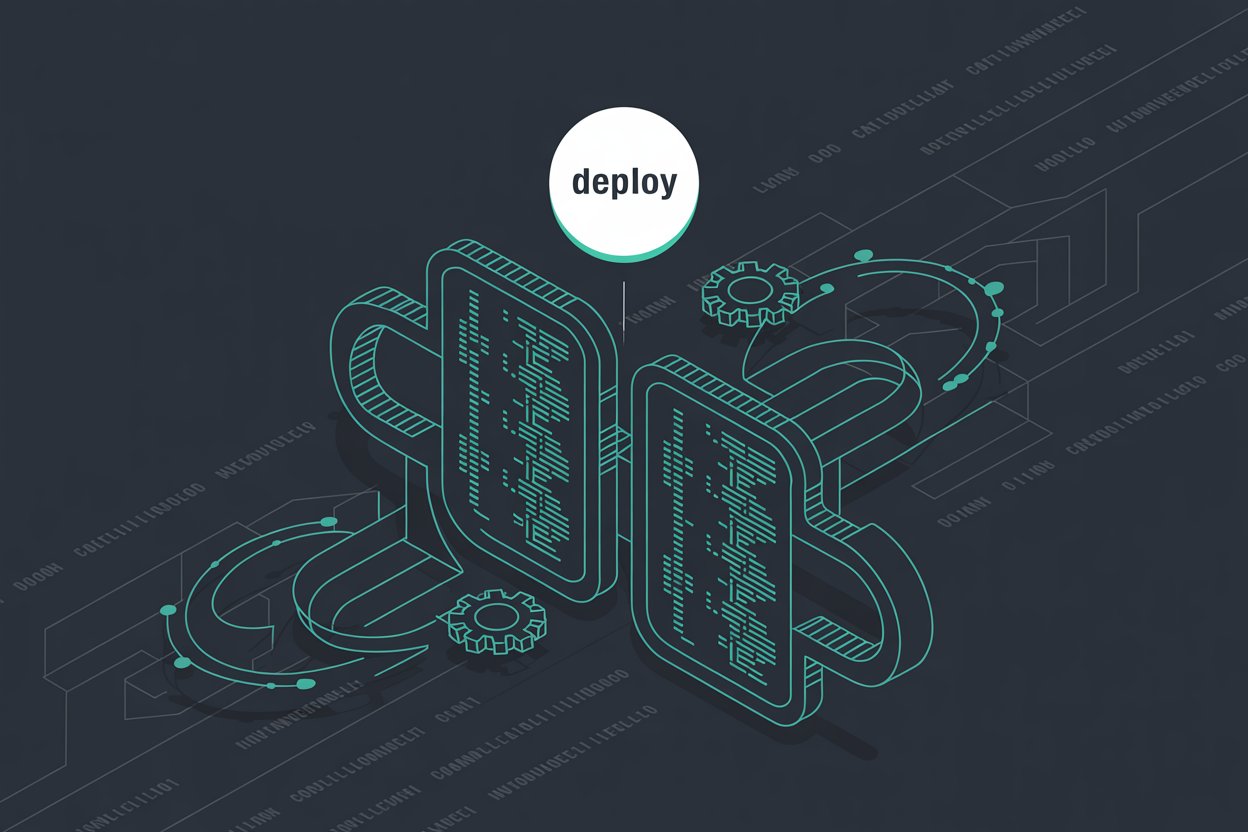
This gives them comfort that your system's integrity isn't easily compromised by ad hoc changes.
Business Continuity and Disaster Recovery Planning for SaaS Startups
The final major area on our SOC 2 checklist is Business Continuity and Disaster Recovery (BCDR). This is about how your startup would continue operating (or recover quickly) in the face of a serious disruption (be it a cyberattack, cloud outage, data loss, or natural disaster). For SaaS companies, uptime and resilience are crucial: customers rely on your service being available and their data being safe. Under the Availability trust criterion (and partly Security), you should have measures to minimize downtime and a documented disaster recovery plan. In practical terms, this means creating backups, having a way to restore systems, and knowing how you'd keep serving customers even if the worst happens.
Checklist: Ensure Continuity and Rapid Recovery
- Data Backups: Regularly back up critical data and systems. Identify what data is essential to your business and customer operations (e.g., databases, server images, configuration, etc.) and implement automated backups for them using a backup and recovery policy. Equally important, test your backups periodically by performing test restores to verify you can actually recover the data. There's nothing worse than discovering a backup was corrupted or incomplete when you desperately need it. Auditors often ask if you test restoration; having a record of test restores (even just a log entry or email) is great evidence.
- Disaster Recovery Plan: Develop a plan detailing how you would recover from various disaster scenarios. This plan should cover different levels of incidents (from losing a single server to losing an entire data center region). Define Recovery Time Objectives (RTOs: how quickly you aim to recover) and Recovery Point Objectives (RPOs: how much data you could afford to lose, e.g., "no more than 4 hours of data"). For example, your plan might state that if your primary cloud region goes down, you'll fail over to a secondary region within 2 hours using database replicas and infrastructure-as-code scripts. Documenting these procedures and targets is key.
- Redundancy and Failover: Where feasible, build redundancy into your product's architecture. This could mean having your application deployed in multiple availability zones or regions, using load balancers, and avoiding single points of failure. Not every early-stage startup can afford full redundancy, but even basic steps like having spare capacity or a cold standby environment can drastically reduce downtime. Note those measures in your business continuity plan.
- Business Continuity Plan (Operational): Beyond IT recovery, consider how the business will continue running during a crisis. For example, if your office is inaccessible (or in modern times, if key staff laptops are encrypted by ransomware), how will your team communicate and work? List out contingency steps like alternative communication channels, remote work arrangements, and contacting customers. The plan should assign roles: e.g., who is responsible for declaring a disaster and initiating recovery, who communicates to customers, etc.
- BCDR Drills: Just like incident response drills, perform disaster recovery tests. This might be as simple as a scheduled simulation where you pretend your primary systems are down and walk through the failover steps. Or it can be a full interruption test (some companies actually turn off a server to see what happens: the Netflix "Chaos Monkey" approach). Startups might not do extreme testing, but even a tabletop walkthrough of the DR plan builds confidence. Record these tests and any lessons learned. It shows auditors (and your team) that you can actually execute the plan under pressure.
Having a solid BCDR capability isn't just for compliance: it's existential insurance for your startup. Remember the statistic that a majority of small companies never reopen after a catastrophic data loss or prolonged outage. SOC 2 compliance pushes you to have these safeguards in place, which in turn protects your customers and your business's survival. Clients (especially enterprise ones) will often ask about your backup and recovery processes in security questionnaires. After following this checklist, you'll be able to answer confidently that you have a tested plan to keep their data safe and service running come what may.
How Comp AI Accelerates SOC 2 Compliance for Startups
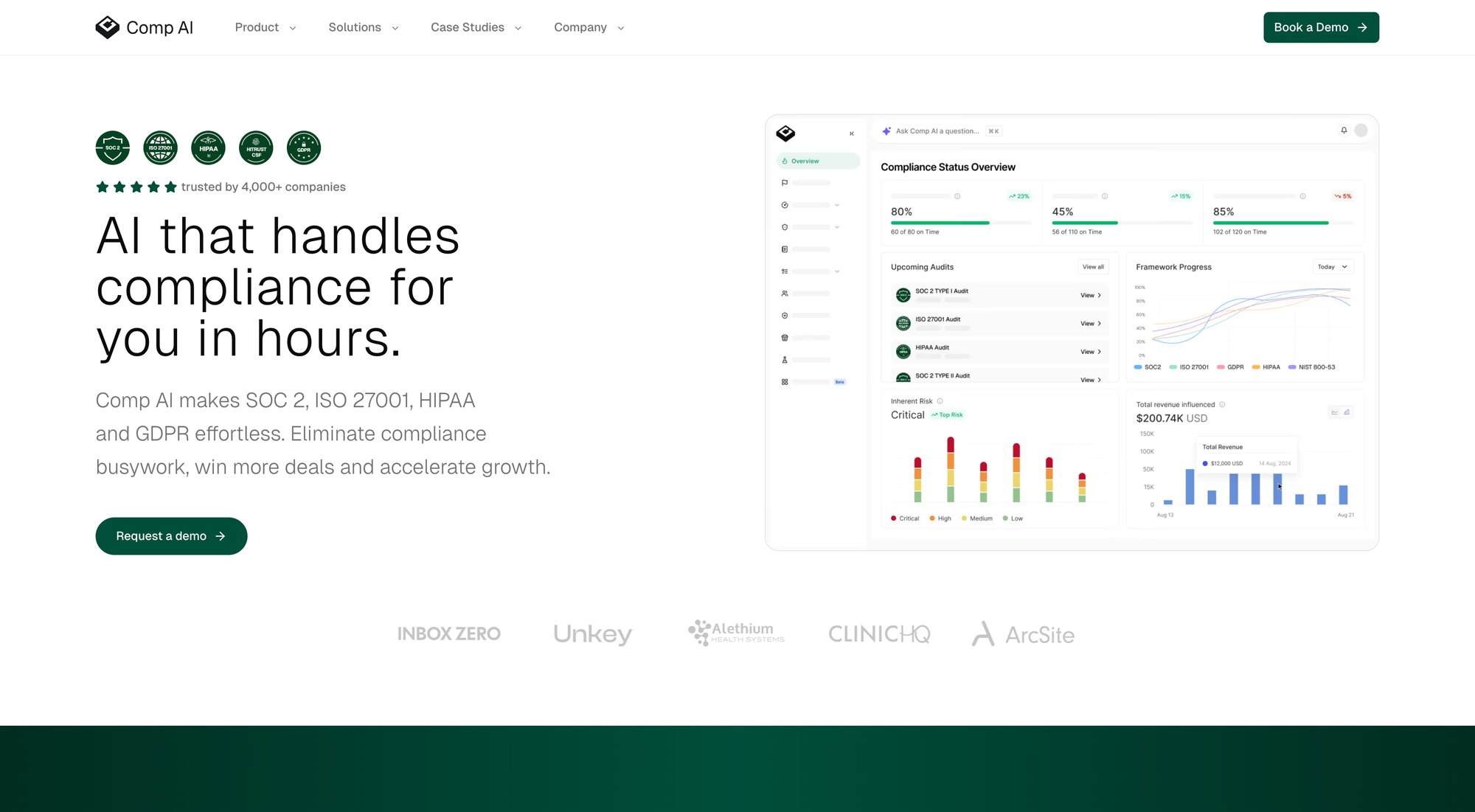
Achieving SOC 2 compliance as a SaaS startup may feel like a marathon, but following a clear checklist like the one above breaks it into manageable steps. You've identified risks, locked down access, set up monitoring, fortified data, prepared for incidents, managed vendors, controlled changes, and planned for disasters. That covers the core of what SOC 2 auditors will examine. It's a significant effort, but the payoff is trust from customers and a stronger, more resilient company.
One important note for 2025: use automation and software tools to lighten the compliance workload. The days of giant spreadsheets and manual evidence collection are fading. Today's compliance automation platforms can connect to your systems and automatically gather audit evidence, monitor controls continuously, and even map your controls to SOC 2 requirements. This can cut the time to get audit-ready by up to 90% compared to traditional manual efforts.
In practice, that means potentially going from a 6-month grind to just a few weeks of focused preparation. For example, automation tools can alert you instantly if an S3 bucket becomes misconfigured rather than you finding out months later, or can generate compliance reports at the click of a button. Many startups find that using such a platform not only speeds up initial compliance but also makes maintaining compliance (for that annual audit renewal) much less painful.
Traditional Approach | Comp AI Automated Approach | Impact |
|---|---|---|
3-6 months preparation | 24 hours to audit-ready | 12x faster |
Manual evidence gathering | 90%+ automated collection | Continuous compliance |
Consultant fees: $50k-100k | Platform: $3k-8k | 85% cost reduction |
Spreadsheets and screenshots | AI-powered monitoring | Real-time visibility |
Comp AI specifically helps SaaS startups achieve SOC 2 compliance faster by automating evidence collection, policy generation, and continuous monitoring. With AI agents handling the tedious busywork (like taking screenshots, pulling configs from AWS or GitHub, tracking employee access), companies can become audit-ready in hours or days instead of months. Comp AI's platform combines automation with white-glove support: a dedicated team helps configure integrations, customize policies, and guide you through each step.
The platform connects to over 100 systems to automatically collect and organize compliance evidence, so you don't have to chase down screenshots or manually document controls. AI-powered features also help answer security questionnaires instantly (turning your policies and evidence into quick responses for customer inquiries) and continuously monitor your infrastructure for any compliance gaps. If a configuration drifts out of compliance, you'll know immediately and can fix it before it becomes an audit issue.
For startups under pressure to close deals or secure funding, this kind of speed and automation can be the difference between winning or losing that opportunity. One Comp AI customer mentioned they were only 30-40% through SOC 2 after 4 months with another platform, but after switching to Comp AI, they became audit-ready in just a couple of days. That's the kind of acceleration that can transform compliance from a blocker into a competitive advantage.
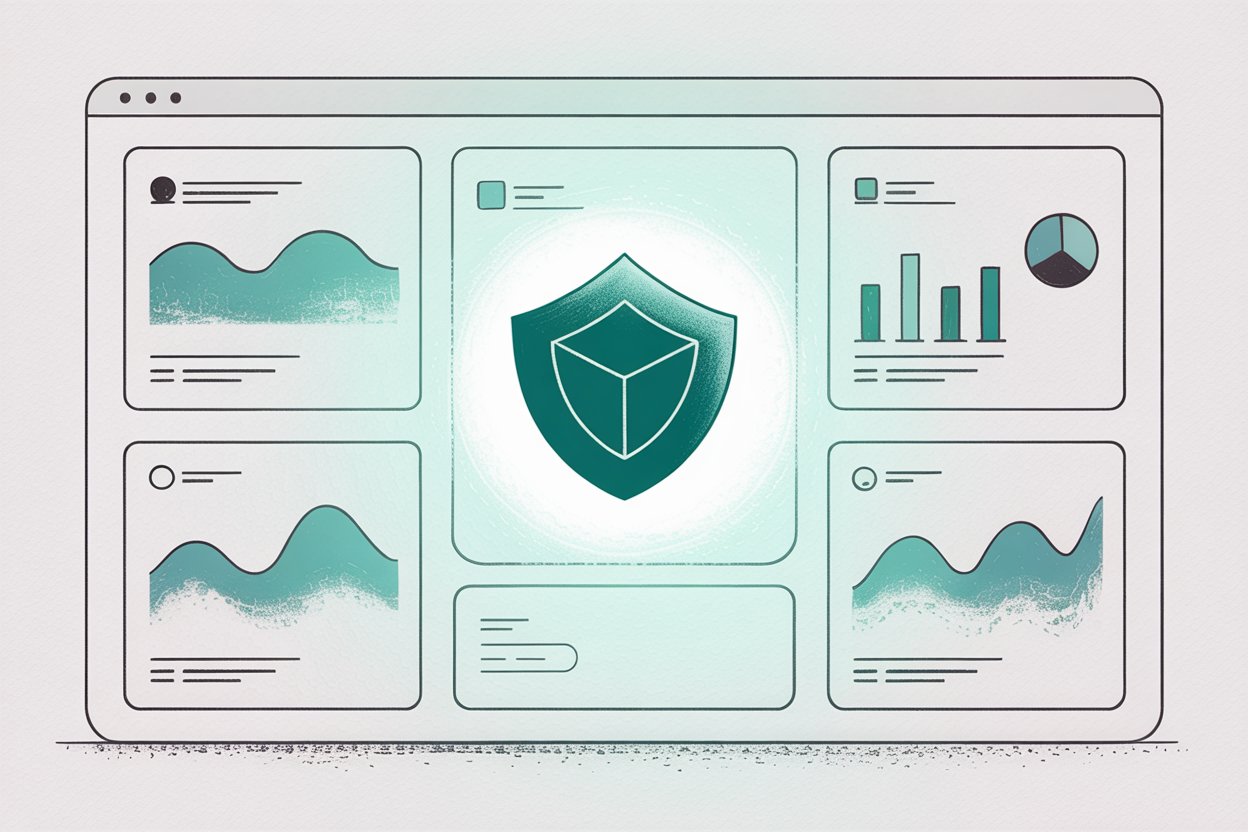
Plus, Comp AI offers a money-back guarantee if you don't pass your audit, giving you confidence that the platform truly delivers. With support for 25+ compliance frameworks (SOC 2, HIPAA, ISO 27001, GDPR, and more), Comp AI positions itself as a long-term compliance partner that can grow with your startup as you expand to new markets and customers.
Final Thoughts on Your SOC 2 Compliance Journey
SOC 2 compliance is a journey, not a one-time project. The checklist you've completed will need to be revisited and refined as your company grows and threats evolve. But by starting early and using modern best practices (especially automation), a SaaS startup can punch above its weight in security. You can confidently show prospects and investors that "Yes, we take security seriously. Here's the proof." In doing so, you not only unlock deals faster but also build a robust operational foundation for the long run.
Don't let compliance slow you down. With the right approach (and the right tools), you can achieve SOC 2 certification quickly and get back to what matters most: building great products and serving customers. Stay secure, stay compliant, and good luck on your SOC 2 journey.
SOC 2 Compliance Questions: Everything SaaS Startups Ask
Q: How long does it actually take to get SOC 2 certified?
A: Traditionally, preparing for a SOC 2 audit can take 3-6 months (or longer) for first-timers. However, with modern automation platforms, startups can become audit-ready in as little as 24 hours for Type I and about 2 weeks for Type II preparation. Keep in mind that SOC 2 Type II requires a 3-month observation period where auditors verify your controls operate over time, but you can start that clock much faster with automation. The key difference: automation handles evidence collection and documentation instantly, so you're not spending months gathering screenshots and writing policies manually. Learn more about the SOC 2 certification process.
Q: Can't I just do SOC 2 compliance myself using free templates?
A: You can try, but it's risky and time-consuming. DIY compliance means you're responsible for understanding all the requirements, implementing controls correctly, collecting evidence, and preparing for the audit. Many startups underestimate the complexity and end up with gaps that cause audit failures. Plus, manually collecting evidence for hundreds of controls can take hundreds of hours. Most companies find that using a compliance platform (even an affordable one) saves enormous time and reduces the risk of missing critical requirements. The cost of a failed audit (or a delayed deal) usually far exceeds the cost of using proper tooling.
Q: What's the difference between SOC 2 Type I and Type II?
A: SOC 2 Type I verifies that your security controls are properly designed and in place at a specific point in time. It's essentially a snapshot showing "yes, these controls exist." SOC 2 Type II goes further by testing that those controls actually work over a period (usually 3-12 months). Type II requires ongoing evidence that you're consistently following your security practices. Most startups start with Type I to quickly prove baseline compliance, then pursue Type II after operating their controls for a few months. Learn more about specific SOC 2 compliance requirements.
Q: How much does SOC 2 compliance cost for a startup?
A: Costs vary widely depending on your approach. Hiring consultants can easily run $50,000-$100,000+ (plus the auditor fee). Using older compliance platforms might cost $20,000-$30,000 annually. Newer AI-driven platforms like Comp AI have made it much more affordable, with packages starting around $3,000-$8,000 (including the audit). The total cost depends on your company's complexity, how many systems you use, and whether you need multiple frameworks. But as a rough guide, expect to invest at least a few thousand dollars (even with automation) when you factor in the platform, auditor fees, and any necessary security improvements. Use the SOC 2 cost estimator to get a personalized estimate.
Q: Will SOC 2 certification actually help us close more deals?
A: Absolutely. Many enterprise buyers won't even consider vendors without SOC 2 (or equivalent) certification. Industry data shows over 60% of businesses are more likely to partner with SOC 2-compliant startups, and about a third of organizations have lost deals specifically due to lacking required security certifications. If you're targeting mid-market or enterprise customers, SOC 2 is often table stakes. It removes a major objection in the sales process and signals that you take security seriously. Plus, having a public trust center where prospects can verify your compliance status can significantly accelerate sales cycles. Check out the SOC 2 readiness assessment to see where you stand.
Q: Do we need to be SOC 2 compliant before we can even talk to enterprise customers?
A: Not necessarily for initial conversations, but you'll need it before signing contracts. Most enterprise procurement teams will ask about your security posture early in the sales process. If you can say "we're currently in our SOC 2 audit process and expect certification by \[date\]," that's often good enough to keep discussions moving. But you won't close the deal until you can provide proof of compliance. The key is to start your compliance journey early (ideally before you need it urgently) so it doesn't become a last-minute blocker. With modern tools, you can get audit-ready quickly enough that it won't significantly delay deals. Use the SOC 2 timeline calculator to plan your certification timeline.
Q: What happens if we fail our SOC 2 audit?
A: Failing an audit isn't common with proper preparation, but if it happens, you'll need to address the auditor's findings and remediate any gaps before trying again. This can delay your certification by weeks or months and damage credibility with prospects who were waiting for your report. The good news: platforms like Comp AI offer success guarantees (if you don't pass, you get your money back), which shows they're confident in their approach. The best way to avoid failure is to work with experienced compliance experts who know what auditors look for and can help you fix issues before the audit even begins. Get started with Comp AI to ensure a successful audit.
Q: Is SOC 2 a one-time thing or do we need to maintain it?
A: SOC 2 certification requires annual renewal (at minimum). Once you're certified, you'll need to undergo audits periodically (most companies do annual Type II audits) to maintain your status. This means you need continuous compliance: your controls must stay in place and operate correctly throughout the year. That's why automation is so valuable. Instead of scrambling each year to gather evidence, modern platforms continuously monitor your systems and keep evidence updated. When it's time for your renewal audit, you're already prepared. Think of SOC 2 as an ongoing commitment to security, not a one-time checklist.
Q: We're a very small startup (under 10 people). Is SOC 2 realistic for us?
A: Yes, absolutely. SOC 2 is increasingly common even for early-stage startups, especially those serving business customers. The key is to start with appropriate scope: focus on the systems and data that really matter, and set up controls that fit your size. A 5-person startup won't have the same security program as a 500-person company, and auditors understand that. Modern compliance platforms make it practical for small teams by automating most of the work and providing expert guidance. Many Comp AI customers are small startups who achieved compliance with minimal engineering time. Don't let size discourage you; with the right tools and approach, SOC 2 is achievable for companies of all sizes.
Q: Can we use the same compliance platform for multiple frameworks (SOC 2, HIPAA, ISO 27001)?
A: Yes, and you should. Many security controls overlap across different frameworks, so a good compliance platform will help you satisfy multiple certifications simultaneously. For example, access control policies you set up for SOC 2 likely also satisfy HIPAA and ISO 27001 requirements. Platforms like Comp AI support 25+ frameworks and can map your controls across all of them, so you're not duplicating work. This is especially valuable as your company grows and enters new markets that require different certifications. Instead of starting from scratch each time, you use the work you've already done and just add the framework-specific requirements.
Share this article
Help others discover this content
More from Compliance Hub
Explore more insights and stay ahead of regulatory requirements.
OneLeet vs Delve: Which Compliance Platform Is Best? (2025)
Compare OneLeet and Delve compliance platforms: timelines, AI automation, pricing, and customer reviews. Plus see how Comp AI stacks up.
Thoropass vs Vanta: Complete Comparison (2025)
Compare Thoropass vs Vanta for SOC 2 compliance. Detailed breakdown of features, pricing, audit models, and which platform fits your startup best.
Vanta Pricing: Complete Cost Breakdown (2025)
Real Vanta pricing from customers: $15k-$30k+ total (platform + audit + fees). Compare costs, timelines, and see how to get compliant 10x faster.